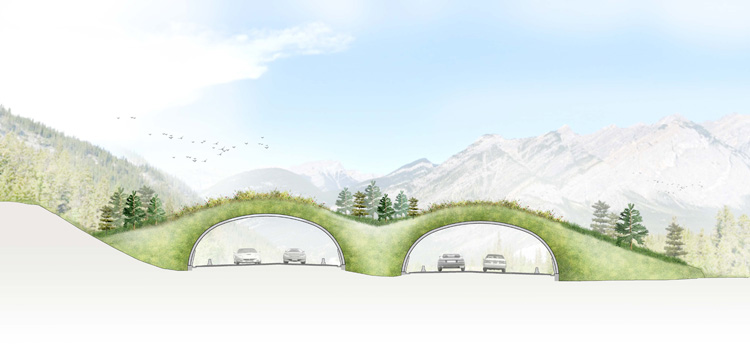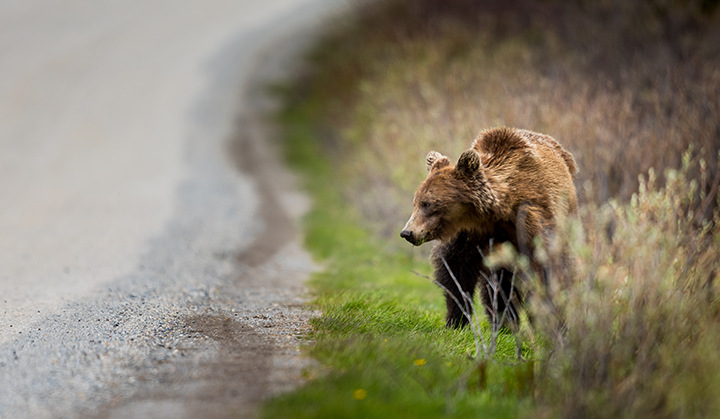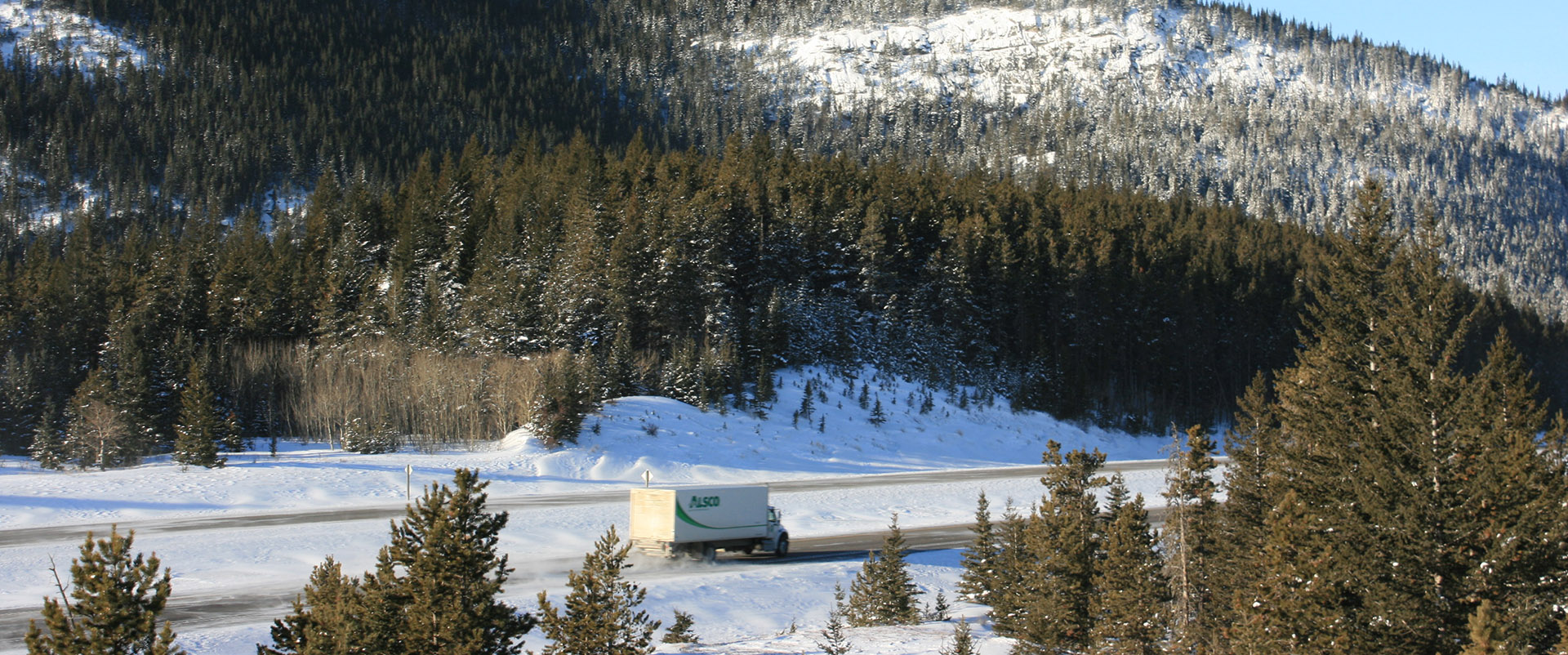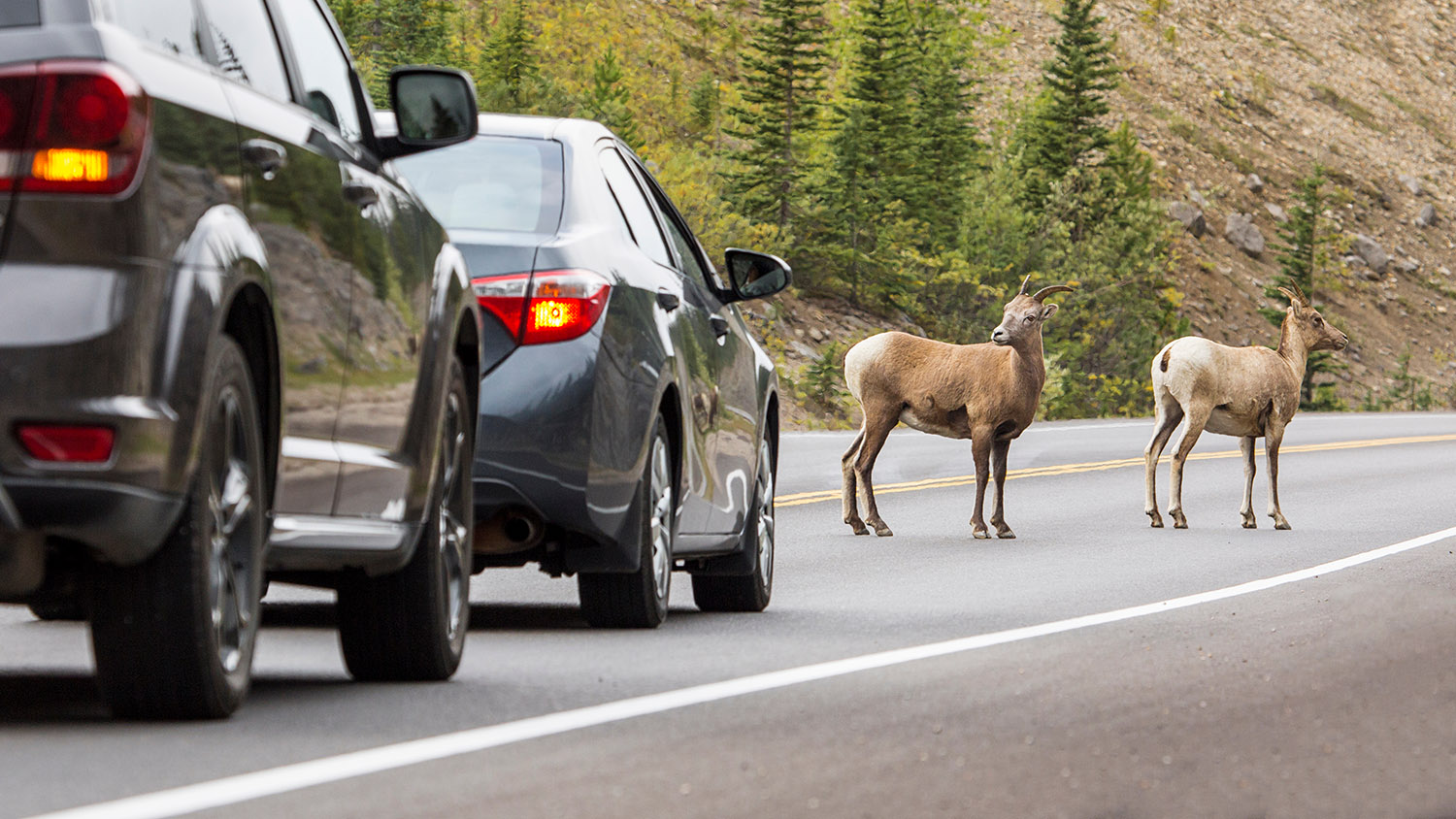Today, Yellowstone to Yukon Conservation Initiative (Y2Y) celebrates the start of construction on Alberta’s first wildlife overpass on provincial lands. Contractors broke ground on the site on Highway 1 east of Canmore near Highway 1X.
This crossing structure is at a key point of the Yellowstone to Yukon region, and is one of several wildlife mitigation projects planned for the province.
This commitment puts the safety of wildlife and people on Bow Valley highways at the forefront, but is also important for wildlife habitat connectivity on a larger scale.
“Adding a wildlife overpass east of Banff National Park offers a proven solution to a known problem. Animals like elk, deer and bears need to cross the road at Bow Valley Gap, and this overpass will help them do it in a way that is safe for them and for the many thousands of people driving this highway every day,” says Adam Linnard, Alberta program manager at Y2Y.
While wildlife crossings contribute to drivers’ peace of mind when travelling to and through the Rocky Mountains, the structures also serve a key ecological purpose. Highways are barriers for wide-ranging mammals such as grizzly bears, wolves, wolverines, and elk. These animals and others need to move through the landscape to access food, water, safety and mates. Wildlife crossings are a proven method to provide safe passage in a cost-effective manner.
Animals that can roam the landscape freely are able to stay connected to a larger population, helping maintain their genetic diversity and improve resiliency to environmental changes. Highways threaten connectivity because many animals get hit by cars attempting to cross, or because they choose not to risk it at all.
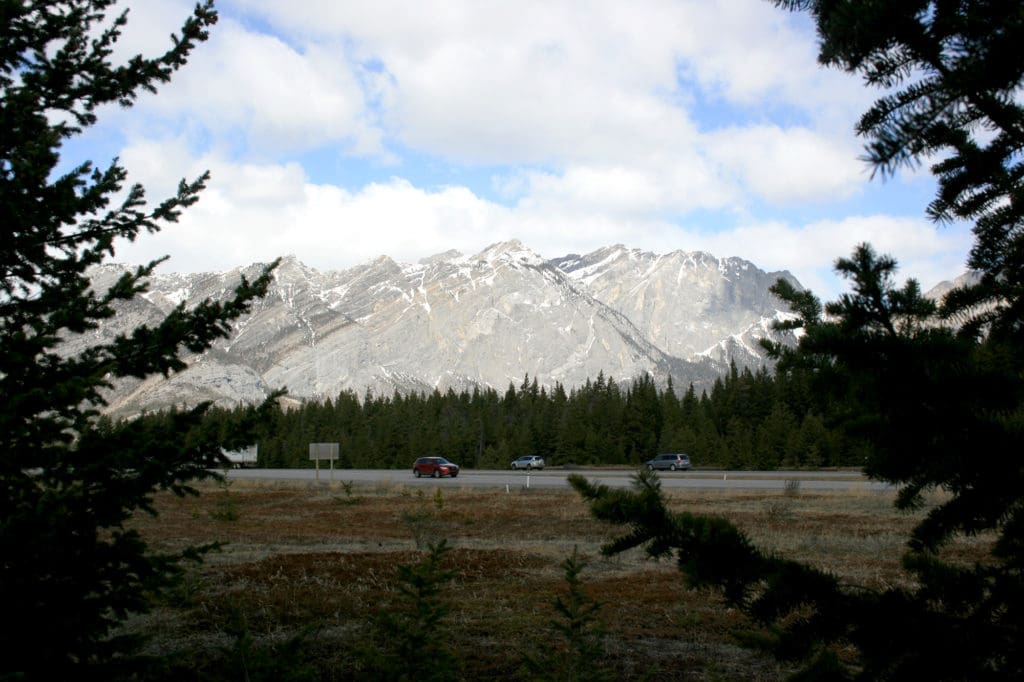
While there have been underpasses, this is the first overpass crossing in Alberta outside a national park.
“This overpass represents so much. For one, the advancement of wildlife crossings across the Rockies and along the Trans-Canada highway from Banff to Yoho, and now the first outside of a national park in Alberta. It also is part of the most intact mountain region in the world and will add to the more than 117 existing crossings dedicated for wildlife across 3,200 kilometers of landscape,” says Dr. Jodi Hilty, Y2Y president and chief scientist. “It is also one of a dozen efforts going forward in the transboundary Canada-U.S. region to help maintain connectivity of this large landscape. This is an exciting day.”
This overpass has been urgently requested for many years, not only by Y2Y and partners, but by thousands of residents and visitors with concerns about wildlife and safety. The crossing has also received formal support from local municipalities, first responders, businesses, tourism organizations, researchers and recreationists.
In 2020, the youth-led Nakoda Audio Visual (AV) Club created an animated film supporting wildlife overpasses east of Banff National Park. “I think there will be less accidents on the road. It’s safer for both travelers and the wildlife,” says Aiden Powderface, one of the filmmakers.
“When we first started learning about this, the youth said that they felt for the animals because they have lost people they loved on that highway, too,” says Jarret Twoyoungmen, the film’s director. “They could see right away how unfair it was when a highway was built through your home and you didn’t really have a say in it.”
While the overpass and fencing at Bow Valley Gap are due for completion in fall 2023, another wildlife crossing is in the works on Highway 3. An underpass and fencing at Rock Creek near Crowsnest Pass are set to proceed to the formal design process. Both proposed crossings are based on research by the Miistakis Institute and Western Transportation Institute.
